The Huawei P30 & P30 Pro Reviews: Photography Enhanced
by Andrei Frumusanu on April 18, 2019 9:00 AM EST- Posted in
- Mobile
- Smartphones
- Huawei
- P30
- P30 Pro
Display Measurement
The display of the P30s is something I was extremely concerned about, and hoping that Huawei would be able to execute correctly. Much of the concern was due to the poor showing of the Mate 20 Pro display which in my review variant was in the form of an LG panel with a MagnaChip DDIC. Mate 20 Pro units with a BOE panel with a Synaptics DDIC reportedly had many fewer issues as well as less power-consumption.
The P30 and P30 Pro continues to see Huawei using various vendors for the displays. The smaller P30 seemingly is using a Samsung panel with a MagnaChip DDIC if I’m not mistaken. The larger P30 Pro dual-sources the panel from LG and BOE again, however this time around the DDIC for both is provided by Novatek, which is a major design win for the company. I wasn’t actually able to identify which variant my P30 Pro had, however I also wasn’t able to identify any glaring issues with the panel or DDIC behaviour.
Another major issue with the Mate 20 Pro OLED display was quite stark colour shifting in off-axis viewing angles. Here both P30s don’t suffer nearly as much of this issue, and perform as you’d usually expect.

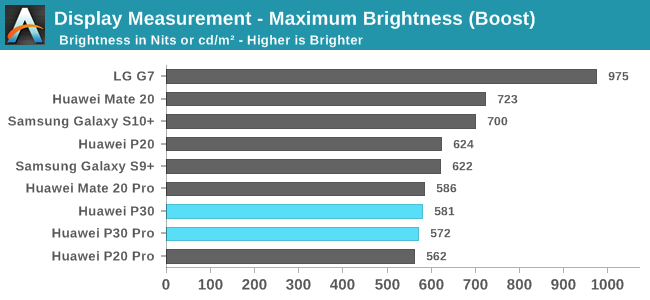
Sunlight legibility of both phones is excellent with auto-brightness boost brightness levels of up to ~570nits. Maximum brightness in manual mode falls in at ~415nits. In effect the brightness characteristics are in line with what we’ve seen in recent Huawei OLED devices.
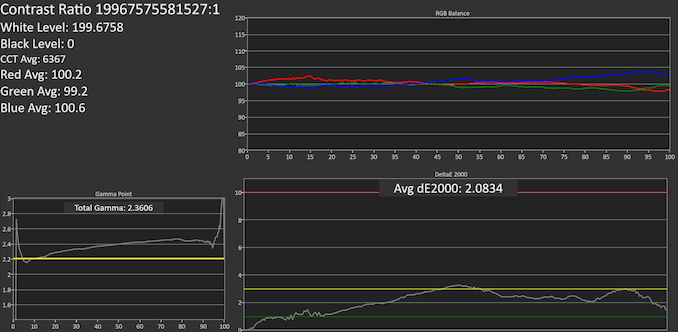
SpectraCal CalMAN
P30 Pro: P30:
Huawei doesn’t ship colour management on the P30s and still relies on its display modes. The “Natural” mode targets the sRGB colour space while the “Vivid” mode targets Display P3. Huawei provides colour temperature controls in both modes and you’re able to freely adjust RGB offsets. For the sake of the article we’re measuring the default presets, respectively the nearest preset that targets near a 6500K colour temperature.
In the greyscale accuracy test, both units have some weaknesses in terms of default colour balance. The P30 Pro comes in with an average 6367K CCT, however this isn’t very noticeable as at the higher levels it’s mostly more blue dominated. Most of the error comes from a higher gamma coming in at 2.36. It’s interesting that this gamma is merely high at our standard 200cd/m² measurement point, going to max brightness we see a much more perfect colour balance (except for the highest 10% levels) with a better gamma, but still seeing a non-linear gamma curve.
The smaller P30 has more issues in terms of its colour balance, here we see a strong dominance of green. This is fixable by adjusting the RGB balance. Like the P30 Pro, the P30 tends to have a too high gamma, showcasing also a more odd stepped response.

P30 Pro - Natural Default - SpectraCal CalMAN
P30 Pro - Vivid Warm - SpectraCal CalMAN
P30 - Natural Default - SpectraCal CalMAN
Colour temperatures across the devices and display modes are best in the default settings, even if they could be tweaked. The P30 Pro’s Vivid mode however is best used with the “Warm” preset.

Grayscale accuracy ends up better on the P30 Pro than on the P30. Both devices end up with deltaE2000 figures of 2-2.7, which is reasonable but not great either. The Mate 20 Pro had a notably better calibration, and the devices also fall behind the P20 Pro, but at least it’s not as disastrous as the Mate 20 or P20.
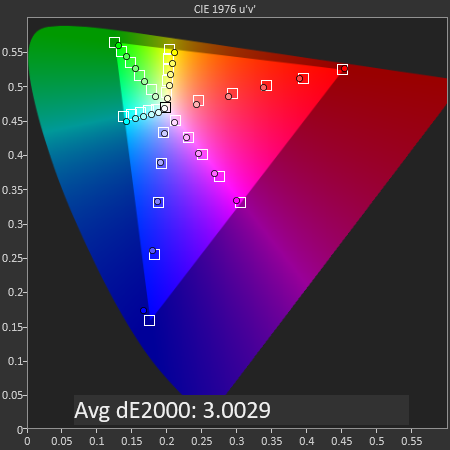

SpectraCal CalMAN
P30 Pro & P30 - sRGB 'Natural'
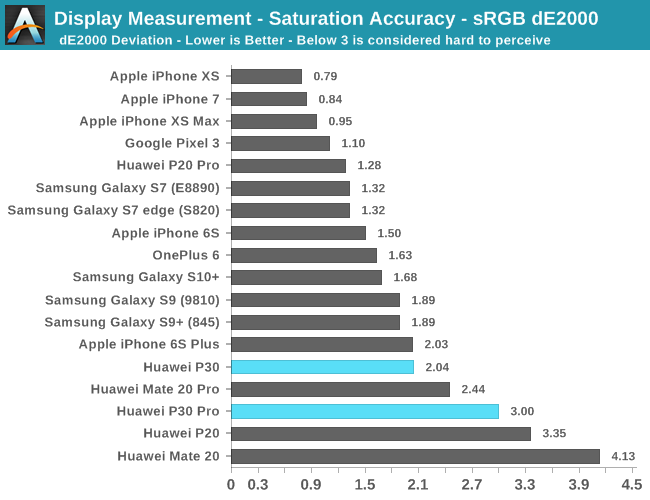
The saturation accuracy on both devices also fall in the dE2000 range of 2-3. The P30 fared better here as on the P30 Pro there was notable inaccurate hues in the yellow and cyan channels, as well as an off-mark blue primary.
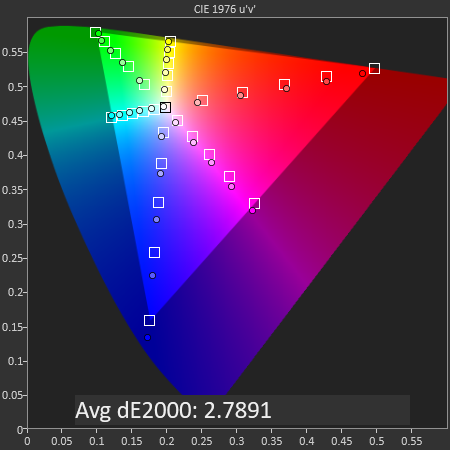
SpectraCal CalMAN
P30 Pro - Display P3 - 'Vivid'
Using Display P3 in the Vivid mode by definition isn’t actually a very accurate colour mode as the phone doesn’t have colour management adapted to the content. Nevertheless, the P30 Pro ended up with a dE2000 of 2.78. Here the biggest errors are in the blue primaries which overshoot the gamut targets, as well as saturation compression in the greens.
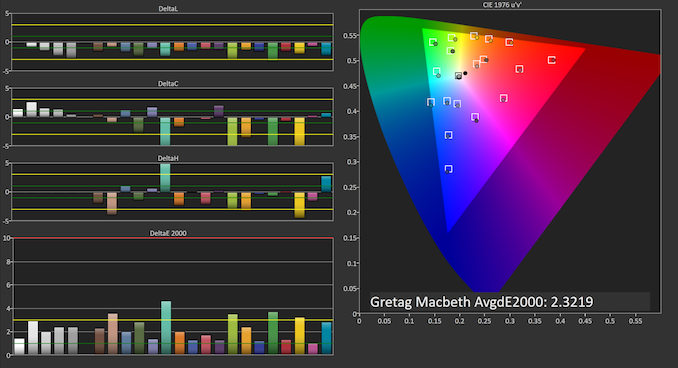

SpectraCal CalMAN
P30 Pro - GreTag MacBeth
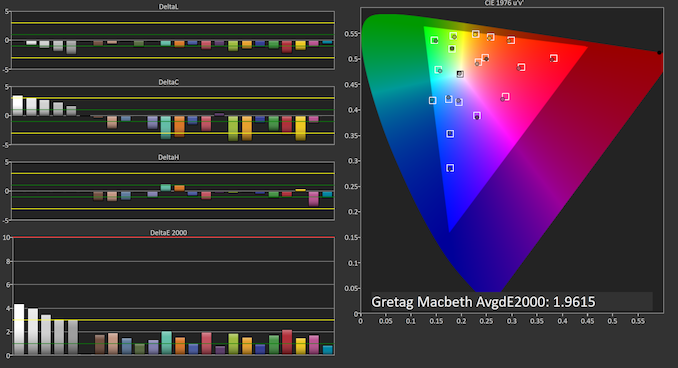

SpectraCal CalMAN
P30 - GreTag MacBeth

In the Gretag-Macbeth colour set of common tones and skin-tones, the P30 Pro ends up with a dE2000 of 2.3 while the P30 manages a better 1.96. The P30 fares better because of gamma/luminosity being nearer the targets, and while its chromacity error isn’t great, it has less severe outliers than the P30 Pro.
Display Verdict
Overall, both P30 screens are good. Their calibration isn’t top-tier, however they also don’t have any glaring issues, such as seen on the Mate 20 or P20. Thanks to the auto-boost function, their brightness is good for outdoor legibility, and the displays also don’t suffer from the weird exaggerated hue shift at off-axis angles such as the Mate 20 Pro.
If I were to criticise the panels in any way, it’s at least on the P30 Pro I would have expected to see a 1440p screen, like on the Mate 20 Pro. After the P30 launch event I was able to talk to Huawei’s VP of product marketing, asking about this precise aspect. I was a bit dismayed when the answer I got for the reason to stick to 1080p was battery life, with the VP insisting it makes a large difference. The Mate 20 Pro’s 1440p failed in terms of battery consumption simply because Huawei wasn’t able to implement it correctly, most notably relying on dual-MIPI DSI interfaces to drive it, instead of using compression with a single DSI interface. DDIC choice is also critical for battery life here; Samsung’s recent Galaxy S10 and S10+ showcase fantastic display power consumption at 1440p that is actually lower than both the P30s at 1080p. I hope in the future Huawei does finally figure out how to implement 1440p correctly, because I do think at screen sizes this big it does give a much needed quality boost, especially for a device that is priced as high end as the P30 Pro.


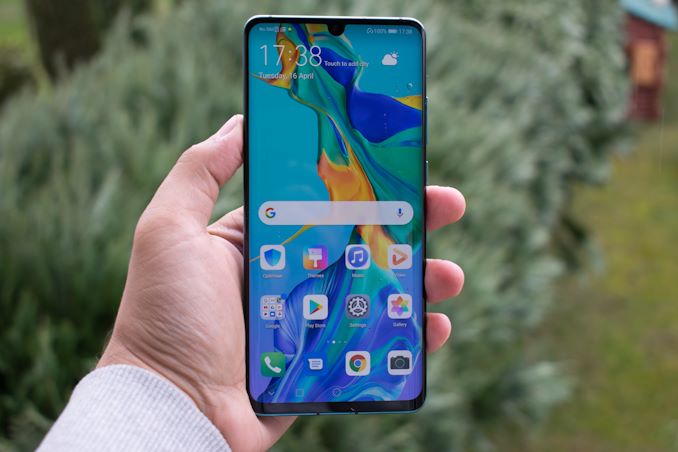








85 Comments
View All Comments
jabber - Thursday, April 18, 2019 - link
I have to remind myself...these are phones?StrangerGuy - Thursday, April 18, 2019 - link
Gotta really see the reaction from the DSLR diehards on this one.philehidiot - Thursday, April 18, 2019 - link
I don't understand. DSLR photography is a totally different ballgame to mobile phone photography. I'd say phones like this make compact cameras almost totally irrelevant.DSLR photography is a different kettle of fish - can you even alter the aperture on these phones? Now if you're buying a DSLR for casual photography and never plan to change from the kit lens and just keep it on auto, then yeh... these phones are kind of a kick in the teeth. To those of us for whom using a DSLR is an art and we have insane macro lenses, tripods and occasionally attach them to a telescope.... a good DSLR is going nowhere.
Also, the qualitative beauty of the dynamic range of a DSLR is something subtle and can make or break a photo. Phones tend to go for brash, impactful but ultimately flat photos. You go "wow" when you see them but you can't compare them to the subtle beauty created by a DSLR sensor when used properly by someone who actually cares to do more than point and shoot.
emn13 - Thursday, April 18, 2019 - link
DSLR's are almost certainly dead in the medium to near term, even for professional use. What I *really* can't wait for is the kind of imaging that's going to possible once this kind of advanced processing is *combined* with higher-end optical systems, as should be possible even on compacts and mirrorless systems. Full-frame is all hyped up and stuff, but the optical sweet spot is almost certainly smaller; the kind of apertures possible even on aps-C and 1-inch sensors are quite sufficient for almost impractically small depth of field; and really, that's optically the *only* advantage there is (at least - assuming people would bother to sell high-end lenses for smaller sensors, which they currently do not).I mean, can you imagine something like this on even just an rx-100 style body? Ideally available in versions with zoom or prime? It would be completely bonkers, and portability isn't that much worse than a modern smartphone.
Frenetic Pony - Thursday, April 18, 2019 - link
Ahh, the usual internet "experts". The hilarious part is even thinking SLR's are somehow cutting edge, which shows how behind everyone here is. Every camera company now has a mirrorless version, which actually different as it's not an SLR at all, for one!I'm just a casual, hobbyist photographer. But my older, APSC mirrorless camera absolutely CRUSHES my Galaxy s8 in terms of image quality, even with the custom Pixel camera APK installed. And I want a newer camera as I'm severely limited in dynamic range, lowlight image quality, and what resolution I can get good images at (4k just isn't doable). Not to mention my image edges are still soft even with a nice prime lens.
Maybe in a few years, when those smartphone and "Light" partnerships show up, and they pair up like 5 cameras into one image successfully, then big sensor mirrorless cameras time will be limited. But for now, there's no contest.
philehidiot - Thursday, April 18, 2019 - link
How arrogant. So we are using DSLR as a descriptor for brevity and you decide to use that as some way of proving we are all wrong. No, there just isn't a handy accronym for mirrorless big ass camera with interchangeable lenses. You know perfectly well what we were discussing so why not add to that discussion rather than being picky for the sake of it? And yes, a decent large sensor will, in the right hands, destroy a phone but they are different propositions.tuxRoller - Friday, April 19, 2019 - link
https://petapixel.com/2018/03/14/death-dslrs-near/s.yu - Friday, April 19, 2019 - link
I advise you to stop reading Petapixel, those people are more amateur than GSMArena (who do a pretty good job despite the name) and Androidauthority (who are real amateurs) when it comes to image quality review so I don't know if they're actually qualified.jabber - Friday, April 19, 2019 - link
I think I've been reading 'the death of DSLRs' for at least 12 years. If it is a death its a very loooooong one.zodiacfml - Monday, April 22, 2019 - link
No. emn13 knows what he's talking about. I'm I die hard RAW shooter of APSC cameras but high end smartphones definitely comes close considering the size, features, and cost. I did not expect smartphones to come this close so soon as I always believed size is everthing in image quality.Limited to a 4k display, it is really close to an APSC camera with a kit lens.